Storage Materials for Photographs: Part 2. What to Put in What …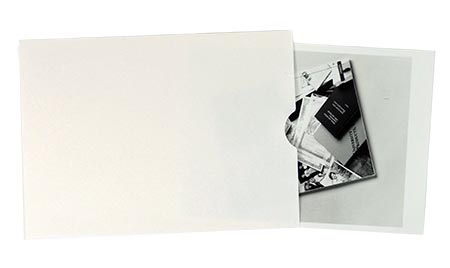
Now that you have read Part 1 of 'Storage Materials for Photographs' you have a good idea of what papers, boards and plastics you can use to store your photographs in, but what, do you put in, what?
Should negatives go into paper or plastic? What about your glass plates; a paper envelope or a plastic wallet? We will look at what enclosure and what photographs should go into it in this blog …
It can be quite useful to think of your storage materials as armour; protecting your photographs from the 'agents of deterioration' (if you're not sure what they are, you can read more about them here), or Agents of Destruction as I like to call them. In terms of packaging, there are two levels of armour:
1. The sleeve, envelope or wrapper
2. The box

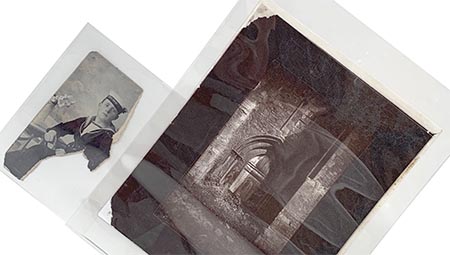
Let's look at the first level of armour; the sleeve, envelope or wrapper …
Each photograph should have its own protective enclosure. It is tempting to put several photographs in one envelope but this will lead to damage to your photographs such as abrasion, handling damage, damage to corners and tears. Your mantra should be 'one photograph in one enclosure'.
Next you need to select the most suitable enclosure. Let's start with photographs on paper.
Photographs on paper
Your photographs on paper can go into either paper enclosures or plastic wallets (pockets/sleeves).
You can view the full range of photographic storage products here
There are advantages and disadvantages to using either paper or plastic:
| Advantages of paper enclosures ✓ |
Disadvantages of paper enclosures X |
| Provides good protection against damp |
Holds damp |
| You are storing like with like (paper with paper) |
Does not offer much support |
| Usually less expensive than plastic |
Must handle photograph to see it |
| You can make notes on the paper (in pencil) |
Can tear |
| Allows ventilation of damaging gases created by the photograph |
Allows some external pollutants to enter |
| Neutralises some pollutants |
|
| Sustainable |
|
| Advantages of plastic✓ |
Disadvantages of plastic X |
| Not affected by changes in temperature, damp etc |
May have an electrostatic charge which can tear and damage your photograph |
| Can see photograph which reduces handling |
Seals any gases generated by your photographs into the package * |
| Strong – resists tearing |
Can cause ferrotyping ** |
| Supports photograph inside |
Can stick to surface of photograph in a flood |
| Protects from external pollutants |
Has very sharp edges |
| Can form a seal to keep water out in a flood |
Not sustainable |
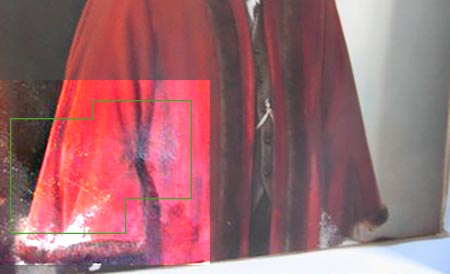
* As your photograph deteriorates it creates many chemicals some in the form of gases, which off-gas into the air. When a photograph is placed into a plastic wallet, these gases cannot escape. This creates what is called a 'microenvironment' in the wallet which speeds up the rate at which your photograph falls apart. It is advisable to leave one or two sides of the wallet open to reduce the rate at which your photograph falls apart; however, you should be aware that the rate at which your photograph falls apart in the plastic wallet will be still be faster than a photograph which is not stored in a plastic wallet
** Ferrotyping (shown in the image) or glazing is when the smooth surface of the plastic rubs against the photographic emulsion causing the photograph to become glossy.
When not to put prints into plastic:
- if they have delicate surfaces, flaking emulsion, hand colouring and/or annotations
- if they are on board
Once you have put your photographs on paper into paper or plastic enclosures they can be stored upright or flat in a box. If you store them flat, take care not to put too many photographs in the box otherwise your photographs at the bottom of the box will be damaged.
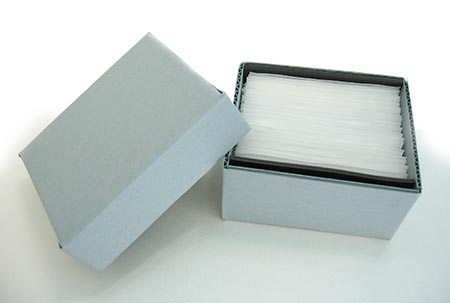 Photographs on glass
Photographs on glass
Your photographs on glass, for example lantern slides and glass plate negatives, should be stored in paper enclosures and stored upright in a box. You may want to pad the box with plastazote, to provide extra protection.
Remember not to put too many photographs on glass in one box. Not only will the box be heavy but if you drop it, that's a lot of photographs to lose.
Remember also to make sure that the box is strong enough to support your photographs both on the shelf and when you move it. You really don't want the bottom falling out or the sides collapsing when you are moving your plates.
I quite often see lantern slides which have been removed from their original wooden box and stored separately. In many cases the wooden box has been discarded. These original wooden boxes are safe to use as long as they are sound and in good condition.
Plastic based photographs
Your plastic based photographs, such as negatives and slides, should always be stored in paper, for example, sleeves or four flaps. Plastic should not be used due to the concern over microenvironments.
Photograph Albums
Should be boxed and stored flat.
You might read in some advice on how to care for photographs that you should interleave the pages of your albums. I only interleave pages when there is a risk that materials or the photographs on facing pages may damage one another, for example a flaky pigment or when there are platinum prints which create a 'ghost' image on any paper or boards they are in contact with. Interleaving every page of an album bulks up the album and puts strain on the spine. Over time the interleaving moves and creases which puts your photographs at risk of damage. On the few occasions when I interleave the pages in an album I use paper not plastic.
For photograph album pages suitable for long term storage click here
For all of those photographic processes that I haven't yet mentioned such as tintypes and daguerrotypes, you should use paper enclosures.
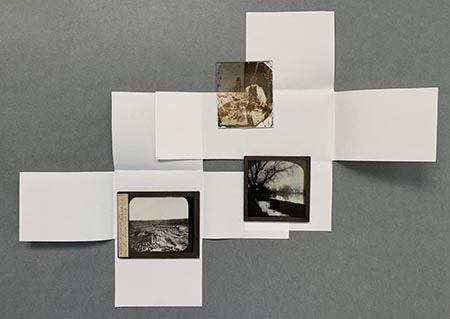 What paper enclosure should I use?
What paper enclosure should I use?
There are a number of options available including envelopes (open on one side only); sleeves (open on two sides); folders (open on three sides) and four four flaps. I use four flap envelopes. They meet all five of the general requirements as outlined in Part 1. In particular, they are adhesive free, they have no pressure points which could mark and indent the photograph and they are unwrap from the photograph making it very easy to access and putting it at no risk.
Which option you choose ultimately depends on the size, condition and number of photographs that you have. You should note that if you use envelopes, they have seams. You should put the seamed side onto the non-image side of your photograph. The seams are pressure points, they allow air to enter the envelope and the adhesive used will degrade over time. All of these will eventually cause indents, stains and marks to the image.
The second level of armour; boxes …
The boxes that you use for your photographs should be:
- made with cotton fibres or bleached wood pulp (a paper or board made from bleached wood pulp should have an alpha cellulose content of 87% or above)
- free from lignin, dyes, waxes and metallic particles
- free from sulphur and peroxides
- has a neutral sizing
and preferably have passed the Photographic Activity Test [PAT]. Or simply stated, boxes designed for storing photographs must be made from materials that will not damage their contents.
Any box that you use should match the size of your photographs and enclosures in dimensions, to prevent your photographs from sliding about and being damaged. Remember to leave space for your fingers in order to allow you to take the photographs in and out of the box.
For made to measure boxes suitable for long term photographic storage, with no minimum quantity, click here

Boxes should not be overpacked.
Your photographs now have their two levels of armour and are safe and protected for the future. If you combine all of the knowledge and advice that you have gained from these six blogs your photographs will survive for many more years to come. Enjoy :)
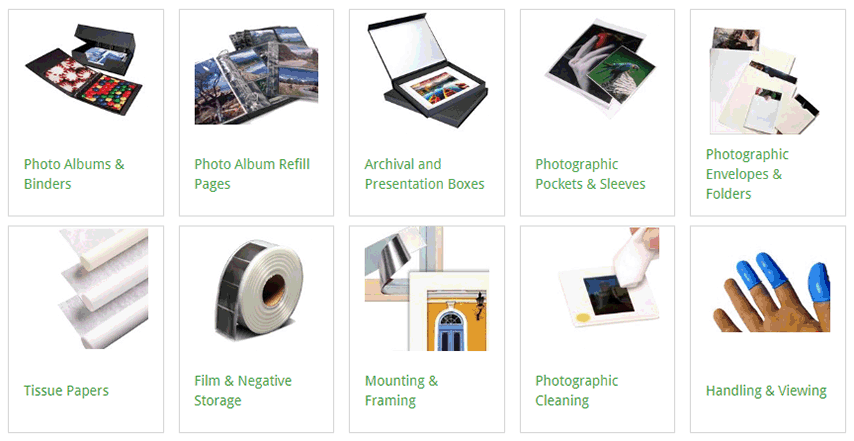
You may wish to refer to our other articles on photographs